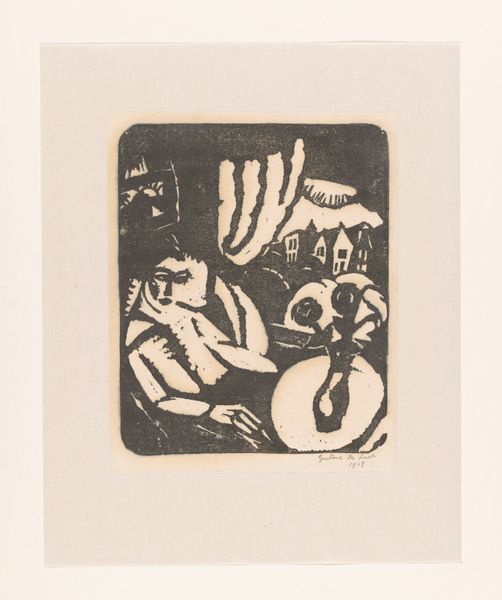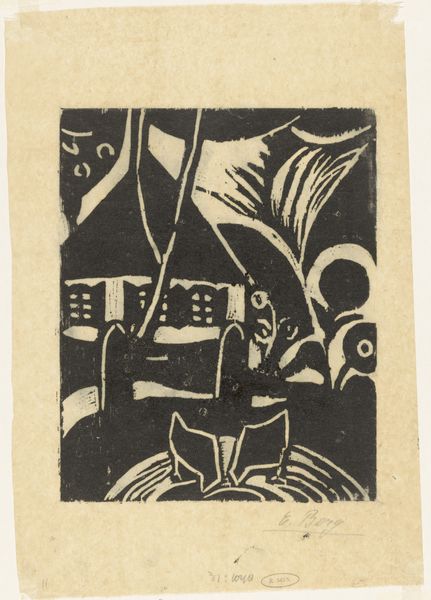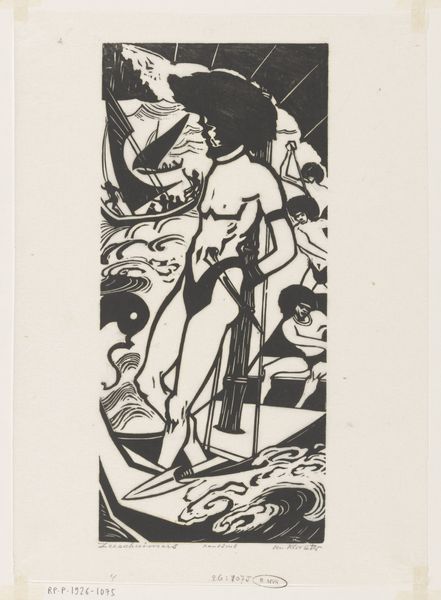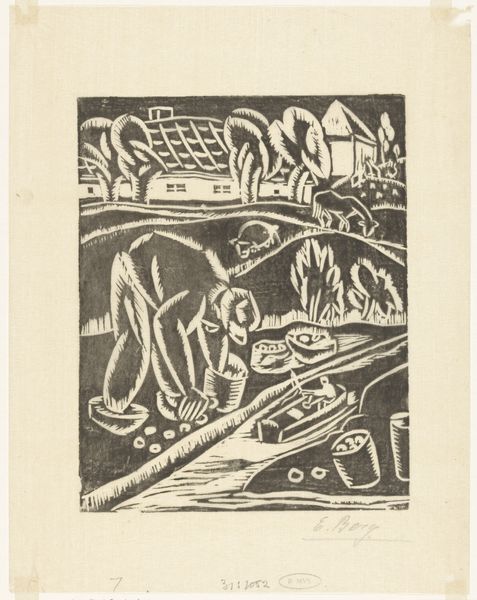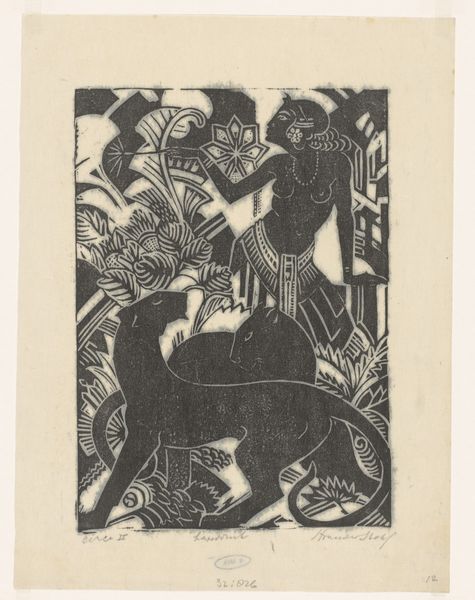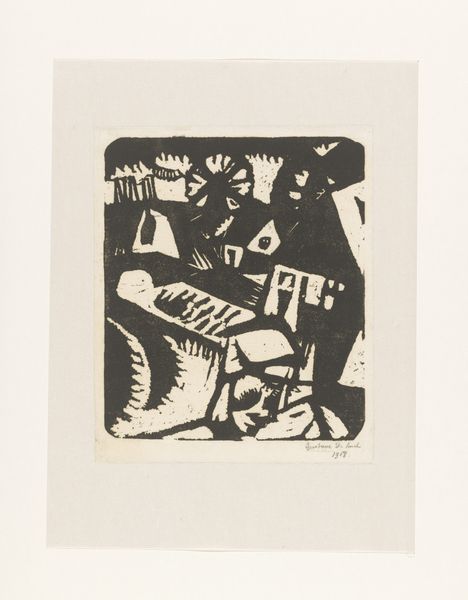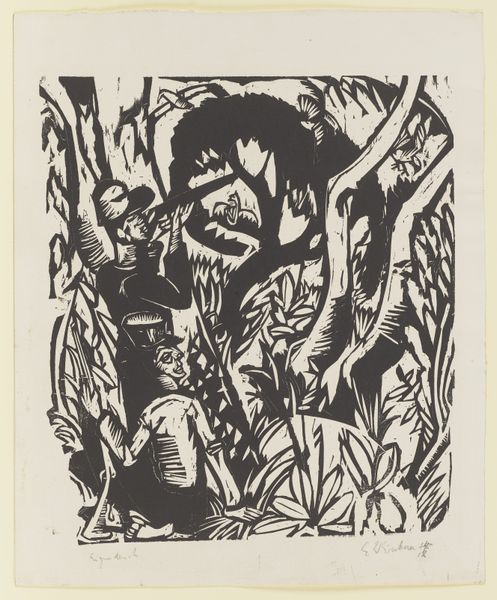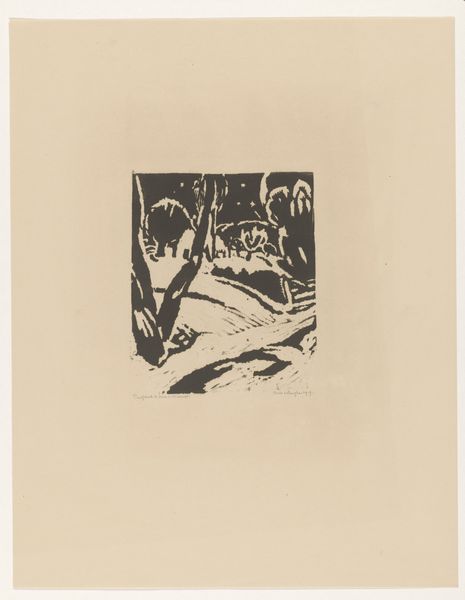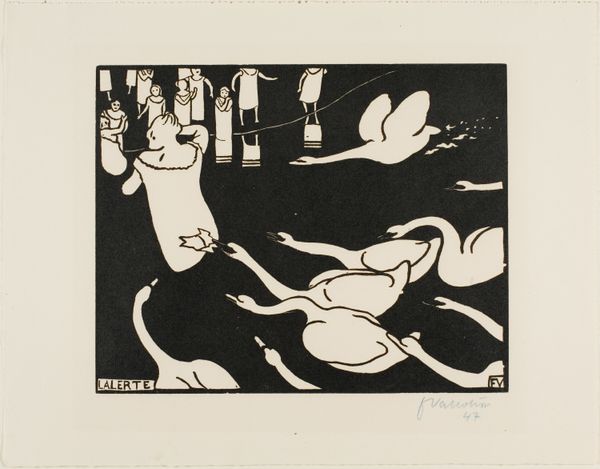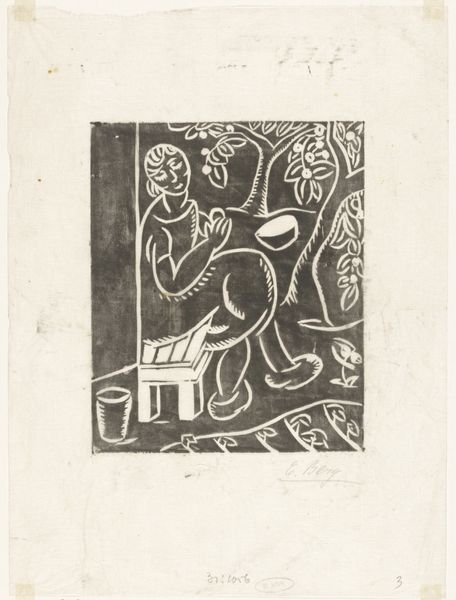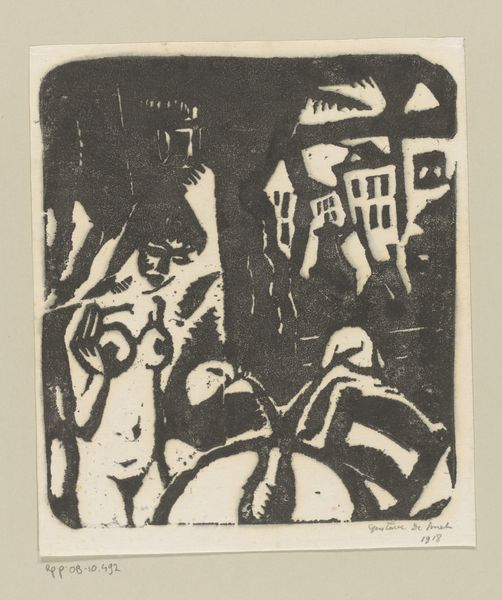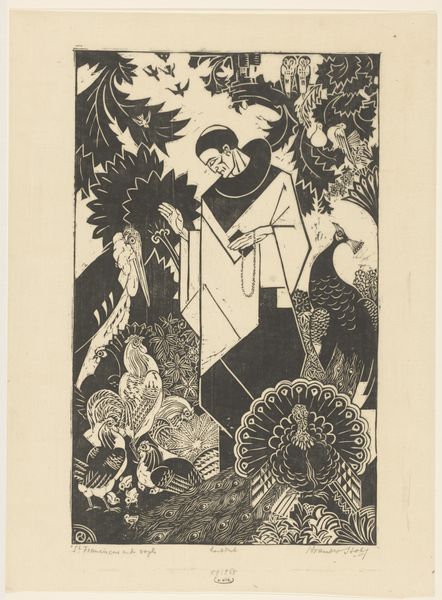
Dimensions: height 408 mm, width 285 mm
Copyright: Rijks Museum: Open Domain
Johannes Frederik Engelbert ten Klooster made this woodcut, called "Papoeameisje" or "Papuan Girl," in the Dutch colonial period. It reflects a Western fascination with, and often misrepresentation of, non-Western cultures. Here, the stark contrast of black and white flattens the image, reducing the figure to a silhouette. This aesthetic choice, common in early 20th-century printmaking, also has the effect of "othering" the subject, turning the individual into a type. The scene evokes a romanticized vision of the South Pacific, likely shaped by Dutch colonial narratives and popular media of the time. To understand this artwork fully, we need to delve into the history of Dutch colonialism and the visual culture it produced. Archival sources and studies of colonial imagery can reveal the complex power dynamics at play in such representations. Ultimately, the meaning of this image is bound to its historical moment and the institutions that shaped its creation and reception.
Comments
No comments
Be the first to comment and join the conversation on the ultimate creative platform.

